Miscommunication can ruin your design process.
Many UX designers and product teams know the pain of trying to transform rough ideas into wireframes that everyone understands. When you rely on clunky or confusing tools, getting meaningful feedback becomes almost impossible.
This misalignment can lead to endless revisions and wasted hours. It is tough when every round of edits feels like starting over.
Here is the reality: according to the Interaction Design Foundation, 60% of UX professionals cite weak or inadequate tools as the top cause of project delays during the design phase. Getting stuck at this stage can affect your project timeline and your team’s credibility.
The right wireframing tool can make collaboration easier, help you communicate your ideas faster, and save you from those never-ending redesign cycles.
That is exactly what you will find in this article. I am going to help you cut through that frustration by reviewing the best wireframe tools available right now.
Inside, I will cover each tool’s features, collaboration options, integrations, and what types of teams they are best for.
By the end, you will have a shortlist of solutions that can help your team deliver clear, professional wireframes—no matter how quickly your deadlines approach.
Let’s get started.
Quick Summary:
| # | Software | Target Users |
|---|---|---|
| 1 | Balsamiq ↗ | Startups and developers needing fast low-fidelity wireframing |
| 2 | Figma ↗ | Designers and product teams wanting seamless collaboration |
| 3 | Moqups ↗ | Designers and product managers needing browser-based wireframing |
| 4 | UXPin ↗ | Designers and developers bridging design and implementation |
| 5 | Justinmind ↗ | Product designers creating interactive prototypes without coding |
1. Balsamiq
Struggling to get your team aligned on product designs?
Balsamiq lets you create wireframes quickly using drag-and-drop components without any design headache.
The biggest pain point for many product managers, developers, or founders is wasted time on complicated designs and unclear communication. Balsamiq solves this by providing a low-fidelity wireframing tool that focuses on flow and functionality, not colors or fonts. This helps your team avoid endless debates and stay focused on what truly matters.
Balsamiq wireframes reduce rework and speed up projects.
You can share your designs easily with links or export files for other tools. This keeps everyone—from engineers to product managers—on the same page. If your team also needs to securely collaborate or exchange project files, you might want to explore the best file sharing software options for enhanced security and convenience.
The hand-drawn style lowers distractions, helping stakeholders focus on user experience and feature flow without getting lost in design details. Plus, starting from templates or customizing pre-built UI components makes wireframing faster and less intimidating.
Collaborate with your team efficiently and make quick tweaks as you move from wireframe to the high-fidelity design or build phase.
Key features:
Drag-and-drop simplicity: Build wireframes fast with pre-built UI components and templates, eliminating steep learning curves and design overwhelm.
Easy sharing and collaboration: Send links or export to your favorite tools so your whole team understands exactly what you mean, cutting down miscommunication. If you want to enhance collaboration further, check out some connected worker platform solutions that boost safety and productivity.
Low-fidelity design focus: Keeps everyone focused on core functionality and flow with hand-drawn elements, avoiding premature design arguments over details.
Learn more about Balsamiq features, pricing, & alternatives →
Verdict:
Balsamiq stands out as one of the best wireframe tools, especially if you want to speed up design cycles and align your product team quickly. It helps reduce rework by focusing discussions on flow and function. Thousands of startups and developers have trusted it since 2008 for exactly this.
2. Figma
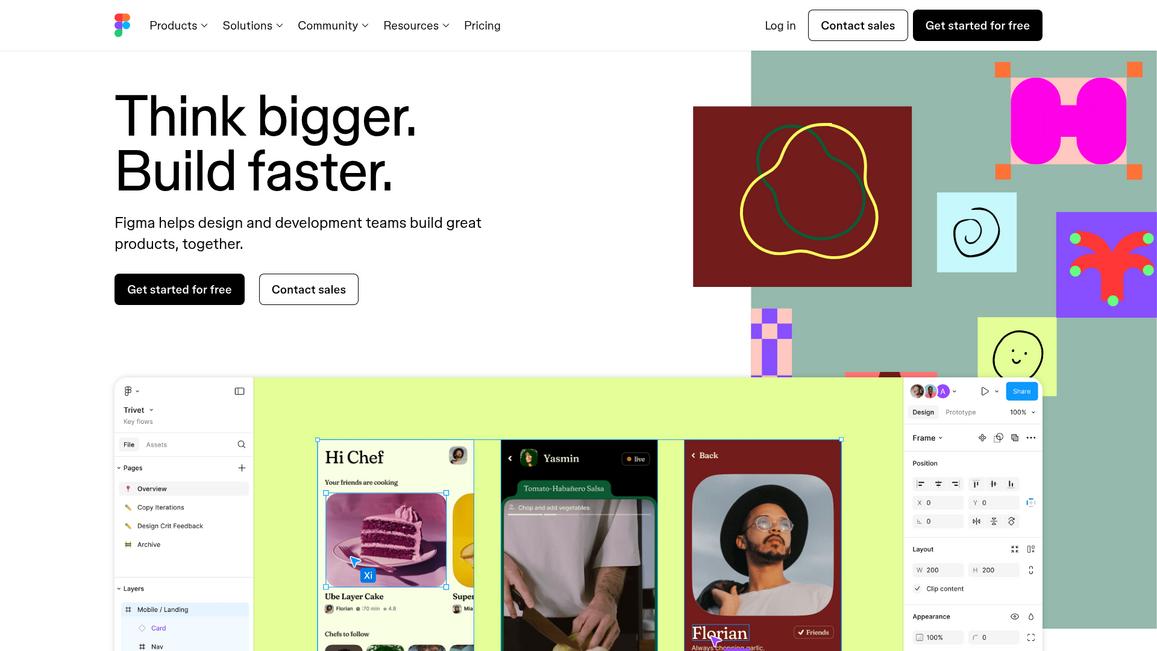
Is collaborating on wireframes slowing you down?
Figma lets you design and prototype in one shared file, making collaboration smooth and efficient.
With real-time collaboration across design, development, and product teams, everyone stays aligned in one place. That means no more version confusion or endless email threads. Its cloud-based platform ensures your team can work together anytime, anywhere, without complicated setups. If you’re looking to help your team work smarter and more collaboratively, you might also benefit from knowledge management system tools for organizing essential resources.
The interface is intuitive, so you can explore ideas freely and iterate quickly.
You’ll also like how Figma’s auto layout helps create designs that automatically adjust to different screen sizes, which reduces tedious manual resizing.
Another cool feature is Dev Mode, built just for developers to easily translate design into code with clear specs and status updates, improving handoffs and speeding up product builds.
Collaboration tools like audio chat and comment threads in the design file keep feedback organized and fast.
Key features:
- Real-time, multi-user collaboration: Work on wireframes together in one file, eliminating miscommunication and speeding approval cycles.
- Auto layout for responsive designs: Automatically adapt your wireframes to different device sizes without extra effort, saving design time.
- Dev Mode for smooth handoff: Provide developers with detailed specs and design statuses to reduce back-and-forth and help build accurately.
If you’re interested in ways to further boost your team’s skills, check out how a corporate LMS software can help with upskilling and ongoing learning as well.
Learn more about Figma features, pricing, & alternatives →
Verdict:
Figma stands out among the best wireframe tools because it brings designers, developers, and product managers together in one platform. Its collaboration and prototyping features helped teams like Dropbox stay aligned and iterate quickly. If you want a tool that speeds up design handoff while keeping your whole team connected, Figma is a top choice.
3. Moqups
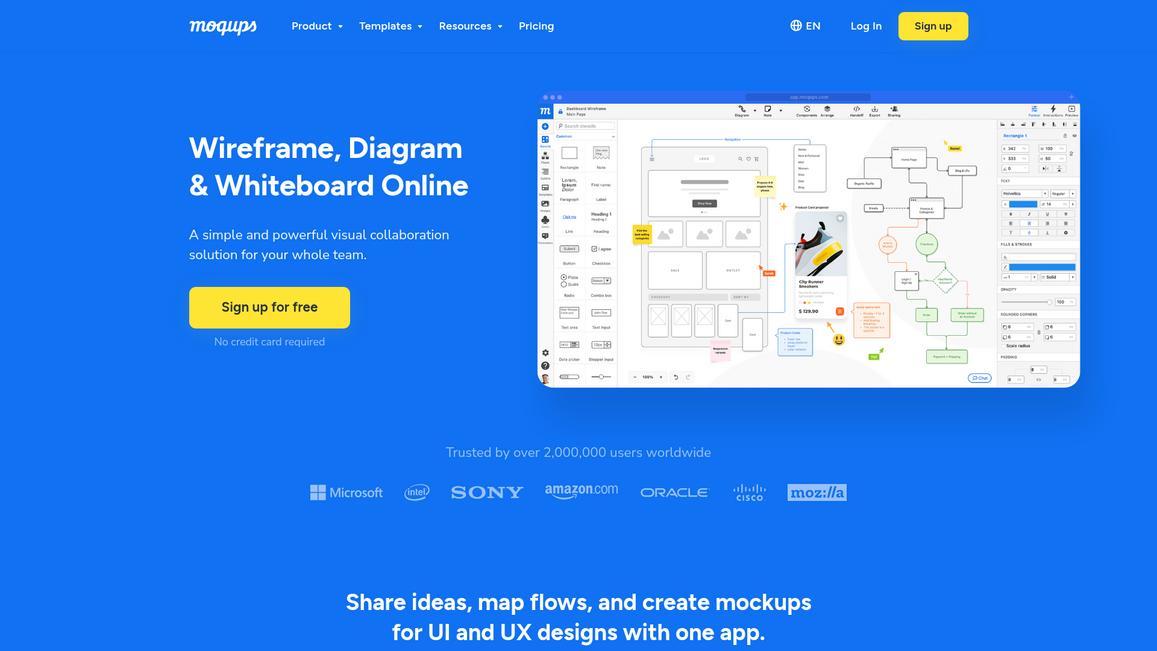
Looking for an easy way to create wireframes and collaborate?
Moqups helps you build professional wireframes, diagrams, and prototypes in one place.
Working in the browser means no installs or downloads slow you down. Its drag-and-drop elements make designing websites, apps, and dashboards straightforward and intuitive. You can take your designs from low-fidelity sketches to polished, interactive prototypes that help stakeholders visualize your ideas.
It keeps your team connected through real-time collaboration features. You can give and receive feedback live, keeping everyone aligned whether you’re remote or in the same room.
Moqups fits your workflow.
The platform organizes projects with advanced page and folder management so you can handle complex, multi-screen designs without losing track. This saves you time searching and switching between files.
You also get access to extensive stencil libraries covering popular design systems like iOS, Android, and Bootstrap, plus icon sets such as Font Awesome and Material Design.
Key features:
- All-in-one wireframing, diagramming, and prototyping lets you quickly move from an idea to interactive design without juggling multiple apps or confusing file versions.
- Real-time team collaboration and feedback tools keep everyone on the same page, speeding up reviews and approval cycles for your project.
- Robust project organization with page management and master pages helps you scale your designs, cut down file chaos, and maintain consistency across multiple screens or projects.
Learn more about Moqups features, pricing, & alternatives →
Verdict:
Moqups stands out among the best wireframe tools for designers, product managers, and developers who want a single, browser-based app for all design stages. Trusted by over two million users, it simplifies building wireframes, diagrams, and interactive prototypes while enabling smooth collaboration. The tool’s flexible page management and rich template libraries help teams stay productive from concept to delivery.
4. UXPin
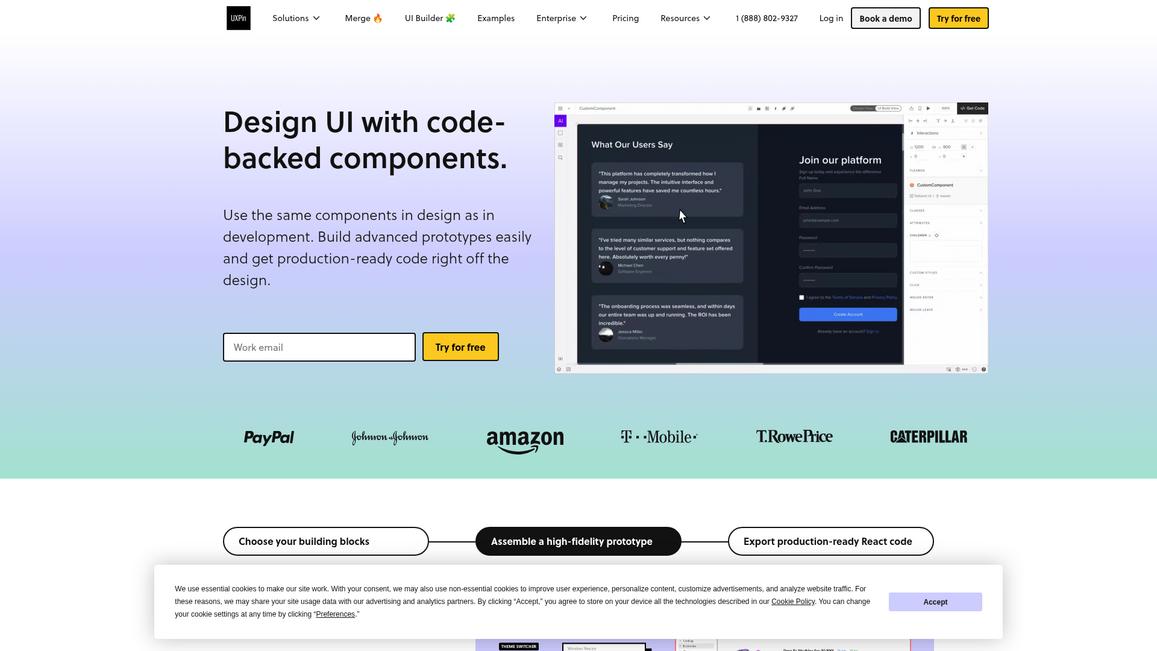
Struggling to get design and development on the same page?
UXPin helps by letting you design with code-backed components, so your prototypes behave like the final product. This bridges the gap between designers and developers and cuts down on back-and-forth.
With built-in React component libraries like MUI and Tailwind UI, you get pre-coded UI elements that are easy to customize. It means you never have to start from scratch, speeding up your design process and improving consistency across teams.
Developers will appreciate that you can export clean, production-ready React code directly from your designs.
Its advanced prototyping features let you add complex interactions, conditional logic, and variables to make your wireframes feel like real apps.
UXPin also offers an AI Component Creator that builds code-backed layouts from simple prompts.
This tool is perfect for designers and developers who need a single environment to collaborate more effectively, reduce handoff headaches, and deliver polished interfaces faster.
Key features:
- Design with ready-to-use coded UI components. Assemble and customize React-based elements quickly, reducing design inconsistencies and bridging design-development gaps.
- Export production-ready React code. Get clean, maintainable code to start development instantly, cutting time wasted on translating designs manually.
- Advanced prototyping with conditional logic and variables. Create interactive wireframes that mimic real app behavior to improve stakeholder buy-in and user testing experience.
Learn more about UXPin features, pricing, & alternatives →
Verdict:
UXPin stands out as one of the best wireframe tools if you want to speed up your product design and development cycle. Clients like T.RowePrice reported cutting feedback cycles from days to hours, and AAA Digital & Creative Services saw major productivity improvements. Its code-backed approach is ideal if you want to reduce errors between design and implementation and ship faster.
5. Justinmind
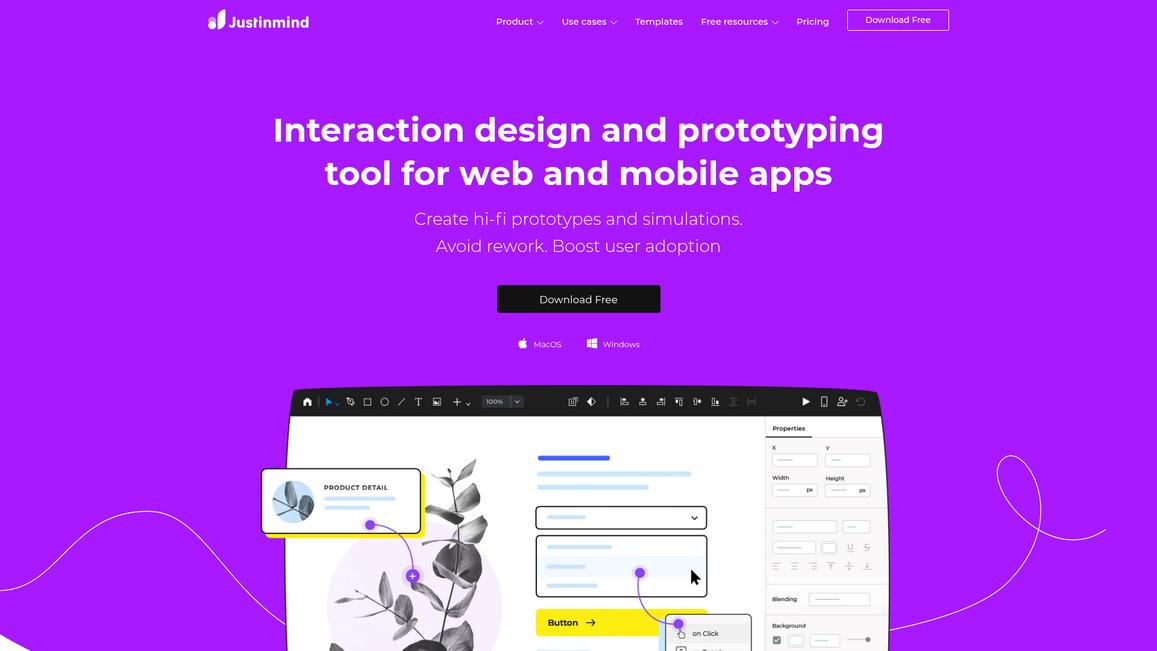
Looking to create effective, interactive prototypes?
Justinmind lets you build high-fidelity prototypes for web and mobile apps without coding. This helps you avoid costly rework and improves user adoption.
You can design rich interaction experiences with complex animations, transitions, and mobile gestures like tap or swipe. It means you get to simulate real user flows and test your UI thoroughly before development.
It saves you time.
All your prototypes can include fully functional forms and data grids, so you don’t have to compromise on details. Testing complex inputs early reduces development back-and-forth.
Another great feature is team collaboration. Multiple stakeholders can review, comment, and co-edit prototypes simultaneously, improving communication and ensuring everyone stays aligned.
Complete design systems support keeps your UI consistent by syncing assets like styles, components, and templates across projects.
Justinmind is ideal for product designers and UX professionals working on apps and websites who want to speed up validation and reduce misunderstandings in the design cycle. Its ability to move easily from wireframes to interactive simulations means you can iterate faster and deliver better user experiences .
Key features:
- No-code high-fidelity prototyping lets you build detailed, interactive mockups that closely mimic final products, reducing time spent on revisions and developer handoff issues.
- Collaborative real-time editing and feedback keeps your team connected, enabling early validation and avoiding costly miscommunication throughout the design process.
- Comprehensive design systems and UI kits help maintain style consistency, speeding up design iterations and promoting reusable components across teams and projects.
Learn more about Justinmind features, pricing, & alternatives →
Verdict:
Justinmind stands out among the best wireframe tools for product designers who want to reduce rework and improve user adoption. Its blend of no-code prototyping, form simulation, and collaboration helped TokBox solve rework problems and deliver better products faster. If you want to create clear, interactive designs that your whole team can review and improve, Justinmind is a solid choice.
6. Visily
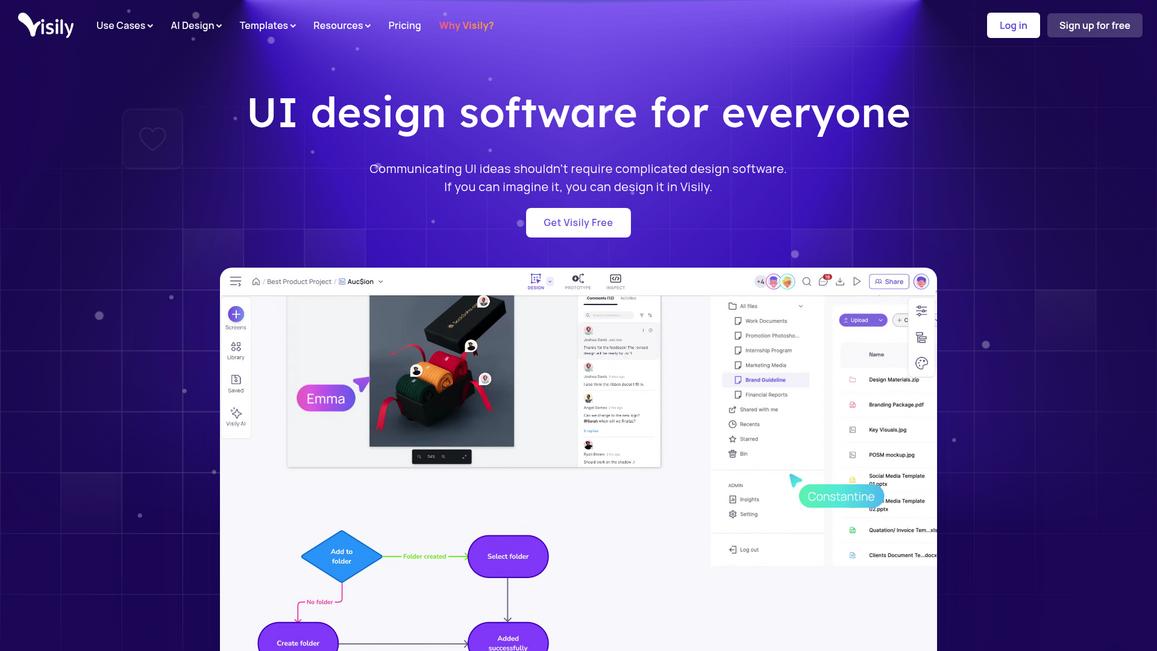
Struggling to create clear UI designs quickly?
Visily uses AI to eliminate design complexity, letting you build high-fidelity wireframes without steep learning curves or plugins.
It’s perfect for product managers and non-designers who need to convert ideas into editable wireframes fast. Visily’s AI instantly transforms text prompts, sketches, or screenshots into editable mockups, making sure you never start from a blank canvas. This saves you hours previously lost on manual design work.
Anyone can design easily.
You get access to over 1,500 templates, smart components, and UI presets that accelerate your workflow while keeping designs consistent and professional.
The platform also shines by fostering collaboration. You and your team can edit and share mockups together, avoiding the usual back-and-forth between departments — reducing wasted effort and miscommunication.
Another cool feature is Visily’s design assistant, an AI-powered helper that boosts your creativity and helps you generate fresh ideas while automating repetitive tasks.
Collaboration just got simpler.
Key features:
- AI-powered design from text, sketches, or screenshots: Quickly generate editable designs that let you turn concepts into prototypes without technical skills or starting from scratch.
- Extensive template and component library: Over 1,500 prebuilt templates plus smart components and UI presets help keep your prototypes consistent and speed up design.
- Built-in collaboration tools: Share and co-edit wireframes seamlessly across teams to boost productivity and reduce costly design miscommunication.
Learn more about Visily features, pricing, & alternatives →
Verdict:
Visily stands out as one of the best wireframe tools for product managers and non-designers who want to speed up UI design without a learning curve. By cutting design time by up to 90%, as reported by Zinnia’s CEO, Visily lets you focus on delivering great products fast. Its AI-driven interface and strong collaboration features make it a smart choice for those aiming to simplify wireframing.
Conclusion
Wireframing doesn’t have to be complicated.
Miscommunication can derail even the best design processes, leading to frustrating revisions and delays. It’s a challenge many product managers and design teams face—finding the right tools to streamline their workflows and drive collaboration effectively.
Indeed, a staggering 60% of UX professionals reported that inadequate tools directly impact project timelines. This highlights just how crucial it is to have the right wireframing solution in place.
That’s where Balsamiq shines. It addresses these issues by simplifying the wireframing process, allowing teams to focus on functionality and flow rather than getting lost in design details. You can leverage Balsamiq’s drag-and-drop interface to create wireframes quickly, reducing unnecessary back-and-forth and expediting your design cycle.
If you’re ready to elevate your design process, I encourage you to start a free trial of Balsamiq. You’ll not only streamline your workflow, but you’ll also enhance team collaboration and deliver clear, professional wireframes that resonate with your stakeholders.
Take that step toward optimizing your design efforts today!


